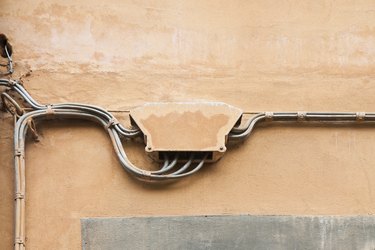
NEMA is an acronym for National Electrical Manufacturers Association. This organization gives electrical component enclosures ratings -- such as NEMA 4X -- based on their protective qualities. NEMA ratings specify whether an electrical component enclosure is safe for outdoor use, and what type of environmental conditions it can withstand.
Use
Video of the Day
Like electrical component enclosures with the NEMA 4 designation, enclosures with the NEMA 4X designation are safe to use indoor or outdoors.
Video of the Day
Benefits
Electrical component enclosures with a NEMA 4X designation provide protection against falling dirt, rain, sleet, snow, windblown dust, splashing water, hose-directed water and corrosion, according to Cornerstone Automation Systems, Inc. Furthermore, external formation of ice on enclosures with a NEMA 4X designation will not cause damage.
NEMA 4 vs. NEMA 4X
The only difference between NEMA 4 and NEMA 4X enclosures is that NEMA 4X enclosures offer corrosion resistance.